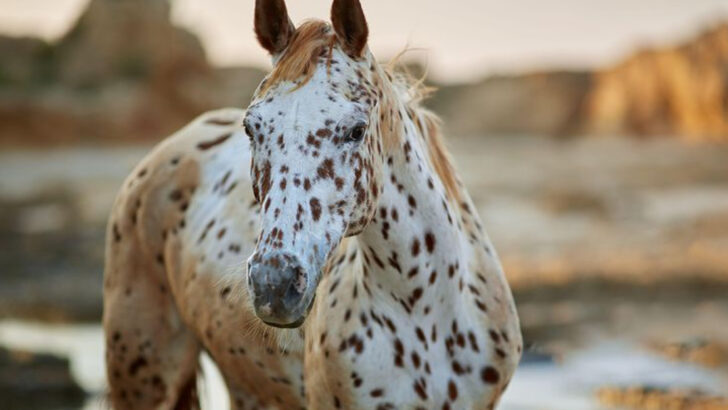Nature doesn’t play it safe—it shows off.
And nothing says “look at me” like a wild, jaw-dropping coat of spots.
From the stealthy leopard in the tall grass to the tiny ladybug hitching a ride on your windowsill, these creatures wear their patterns with flair—and purpose. Their dots aren’t just for decoration. They’re built-in camouflage, survival tools, and sometimes even love notes in the wild.
Every spot tells a story. Some hide. Some hunt. Some dazzle for the sheer thrill of being noticed.
Get ready to meet 17 animals that turn spots into style and survival—proof that nature’s got a bold, artistic side.
Leopard
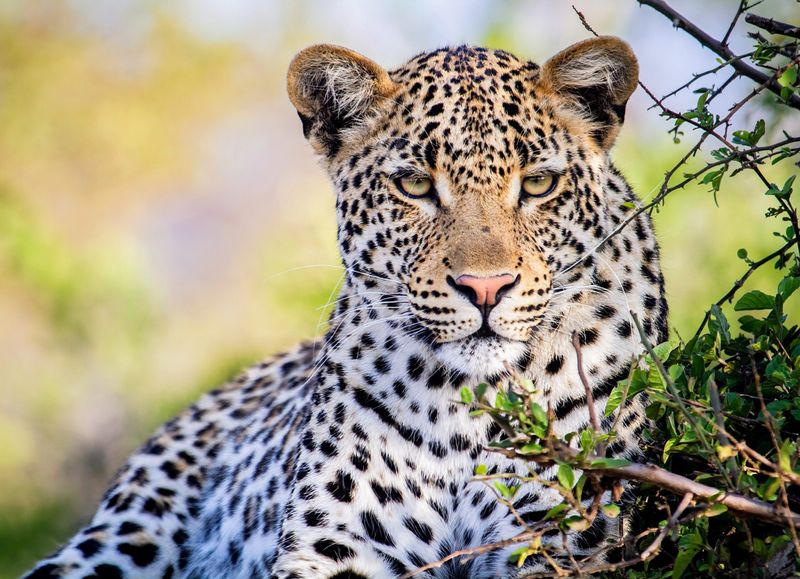
Leopards, found across Africa and Asia, are renowned for their striking spotted coats. Each leopard’s spots are unique, a pattern of rosettes that resemble roses. These spots serve as camouflage, blending seamlessly with the foliage and dappled light of their habitats.
Leopards are solitary and stealthy hunters, using their spots to ambush prey. Their adaptability to various environments makes them one of the most successful big cats.
Did you know? A leopard’s spots are not just on its fur; they are also on its skin, a permanent marker of its dotted beauty.
Dalmatian Dog

Dalmatians are synonymous with their black and white spots, famously known from firehouse mascots and the movie “101 Dalmatians.” These spots are unique to each dog, appearing a few weeks after birth.
Their history is as fascinating as their appearance, having served as carriage dogs, firehouse mascots, and beloved pets. Known for their energetic and playful nature, Dalmatians thrive on activity and companionship.
Quirky fact: Despite their fame, Dalmatians are born completely white, with their spots developing as they grow, adding to their charm and uniqueness.
Spotted Eagle Ray
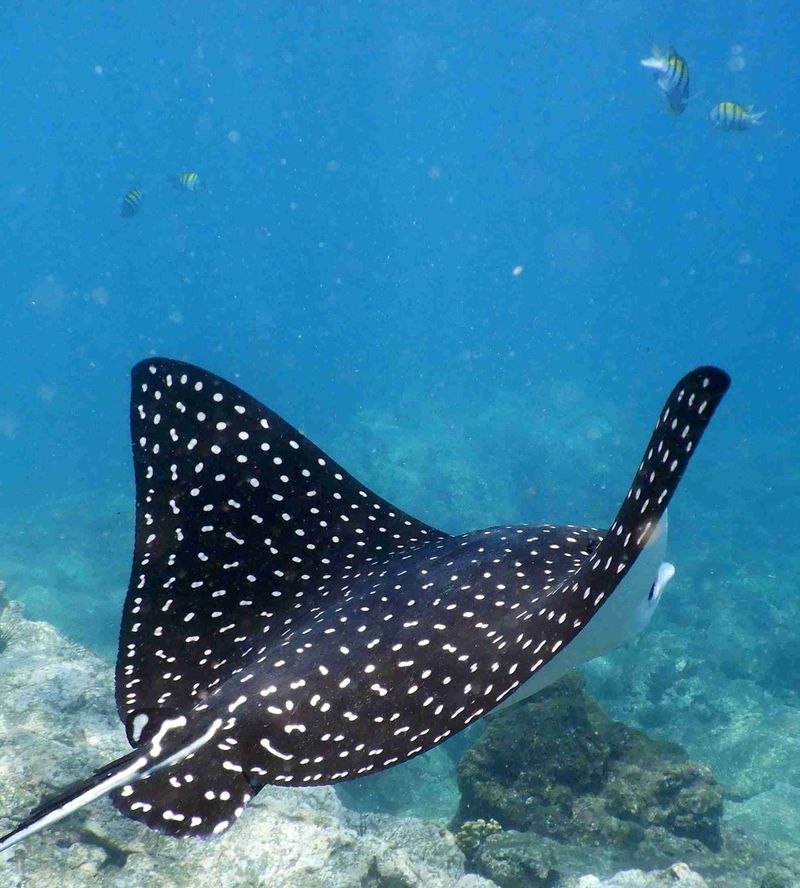
The Spotted Eagle Ray is a sight to behold in the ocean depths. Its distinct white spots against a dark body create a mesmerizing pattern, helping conceal it from predators and prey alike.
These rays are often seen gracefully swimming in tropical waters, their long tails trailing behind. Their spots are not just for show; they play a critical role in their survival.
Fun fact: Spotted Eagle Rays can leap out of the water, a stunning spectacle that showcases their agility and the beauty of their spotted wings.
Ladybug
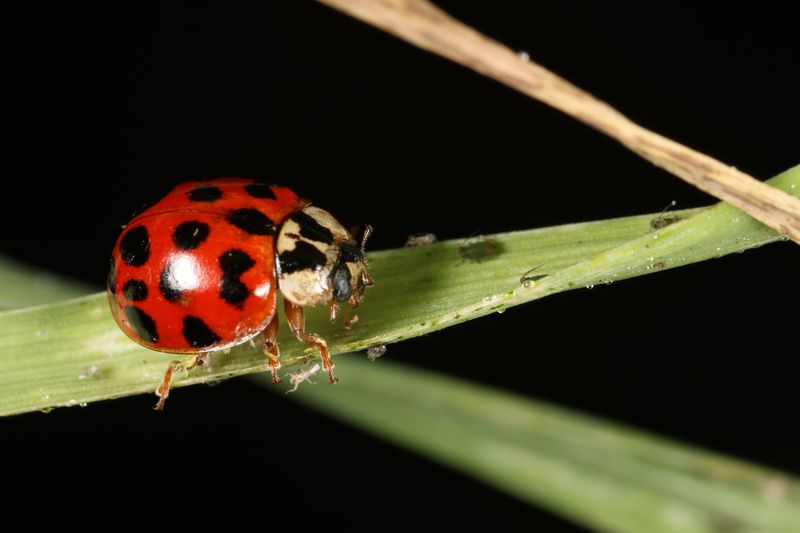
Ladybugs, with their vibrant red shells and bold black spots, are a gardener’s friend. These tiny insects are natural pest controllers, feasting on aphids and protecting plants.
Their spotted exteriors serve as a warning to predators about their distasteful nature, a natural defense mechanism. Each species of ladybug has a unique pattern, with varying number of spots.
Did you know? In many cultures, ladybugs are considered symbols of good luck, and their presence is believed to bring prosperity and protection to gardens.
Jaguar
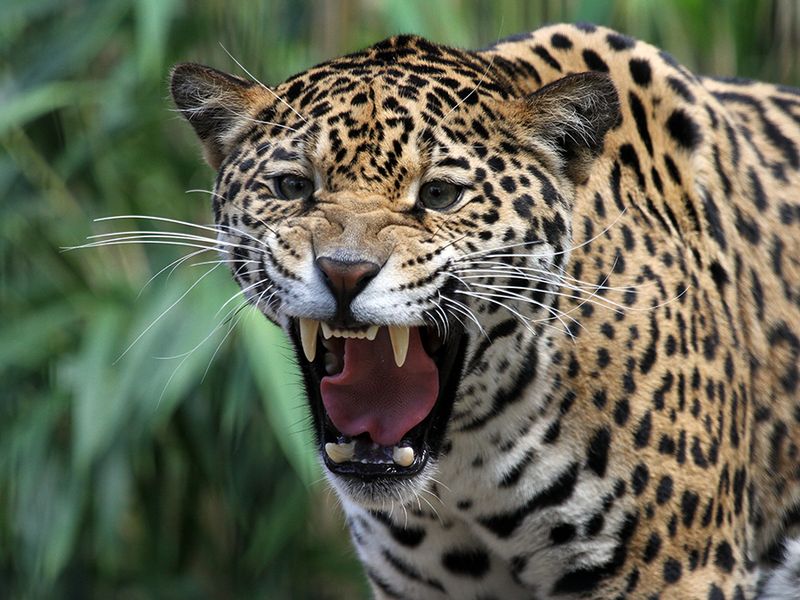
Jaguars are iconic big cats of the Americas, distinguished by their robust build and stunning coat adorned with black rosettes. These patterns help them blend into the forested and riverine environments of the Amazon.
Known for their strength, jaguars are apex predators, using their powerful jaws to hunt a variety of prey. The beauty of their spots is matched by their formidable presence.
Historical tidbit: In ancient cultures, jaguars were revered as symbols of power and strength, often depicted in art and mythology as guardians of the forests.
Cheetah
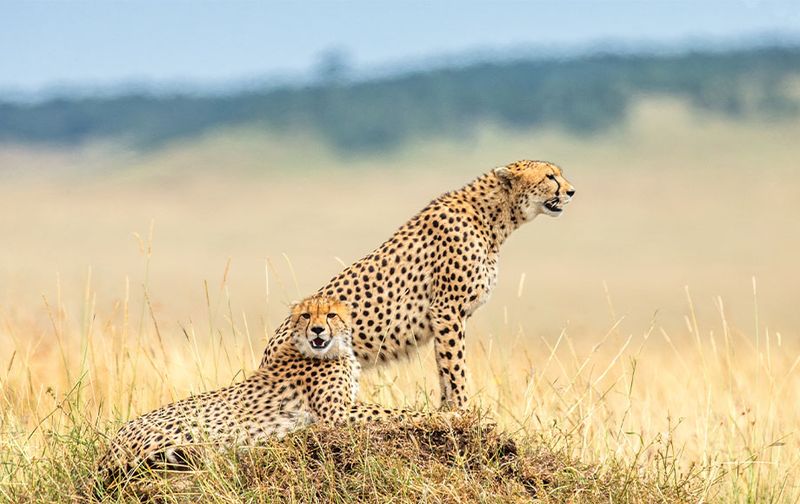
Cheetahs are the fastest land animals, and their sleek bodies are finely adapted for speed. Their small black spots help them blend into the grasses of the African savannah, providing excellent camouflage.
These majestic animals rely on their incredible speed to chase down prey, their spots an essential tool in stalking and approaching unnoticed.
Interesting fact: Unlike other big cats, cheetahs have black “tear marks” under their eyes, believed to reduce glare and help focus on prey, making them remarkable hunters.
Spotted Hyena
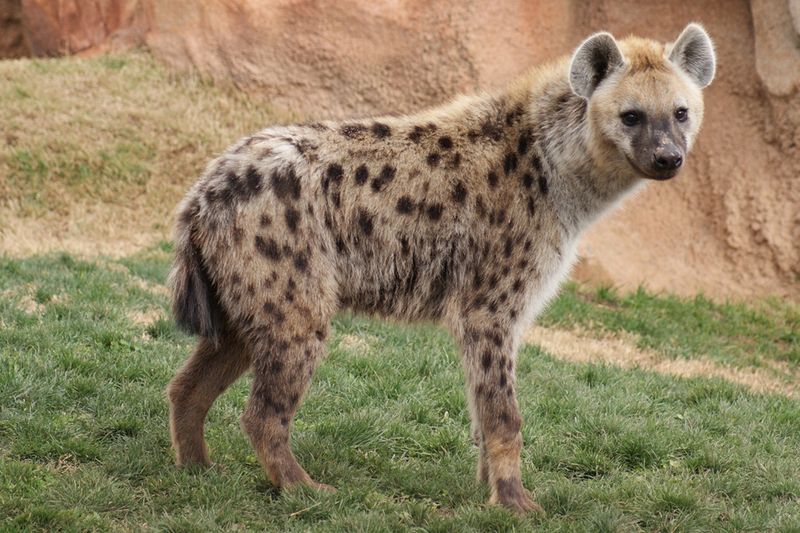
Spotted hyenas are often misunderstood, yet they play a crucial role in Africa’s ecosystems. Their sandy coats are dotted with irregular black spots, providing camouflage in the savannah.
Known for their laughter-like vocalizations, hyenas are highly social animals, living in matriarchal clans. Their strong jaws can crush bones, making them effective scavengers and hunters.
Did you know? Female spotted hyenas are larger and more dominant than males, a unique trait in the animal kingdom that underscores their fascinating social structures.
Giraffe

Giraffes, the tallest land animals, are instantly recognizable by their long necks and patterned coats. Their spots vary in size and shape, resembling a map of the African savannah.
These spots are not just beautiful but functional, helping giraffes regulate body temperature and providing camouflage among trees.
Fun tidbit: Each giraffe’s spot pattern is unique, much like a human fingerprint, making them individual works of art in nature’s gallery.
Snow Leopard
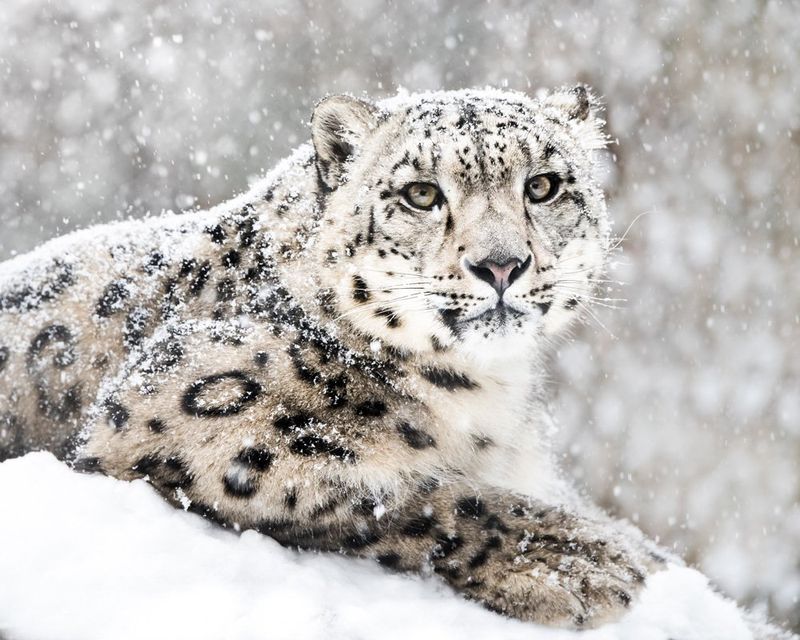
Snow leopards, elusive and majestic, dwell in the high mountains of Central Asia. Their thick, spotted coats provide excellent insulation against the cold and camouflage among the rocky terrain.
These big cats are solitary, known for their incredible leaping ability and quiet strength. Their spots form rosettes with a central spot, distinctively setting them apart.
Quirky fact: Snow leopards can’t roar like other big cats but communicate with unique vocalizations, adding mystery to their already enigmatic presence.
Appaloosa Horse

Appaloosa horses are celebrated for their striking spotted coats, which come in various patterns and colors. This breed has a rich history, originally bred by the Nez Perce people of North America.
Their spots make each horse unique, a testament to nature’s artistic flair. Beyond their beauty, Appaloosas are known for their versatility and gentle nature, making them popular in equestrian sports.
Historical note: The Appaloosa’s distinctive look has made it a symbol of the American West, embodying both freedom and beauty in motion.
Spotted Boxfish
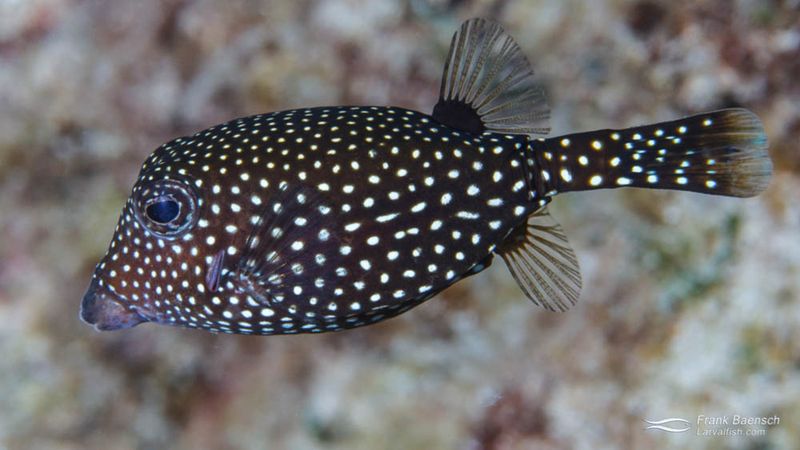
The Spotted Boxfish is a small, intriguing fish found in coral reefs. Its black and white spots create a distinctive pattern that confuses predators.
This unique fish is not just about looks; it secretes a toxin when threatened, deterring potential threats. Its boxy shape and vibrant spots make it a favorite among marine enthusiasts.
Did you know? The Spotted Boxfish’s spots are more than just decoration; they play a role in its survival, a perfect blend of beauty and function.
Spotted Salamander
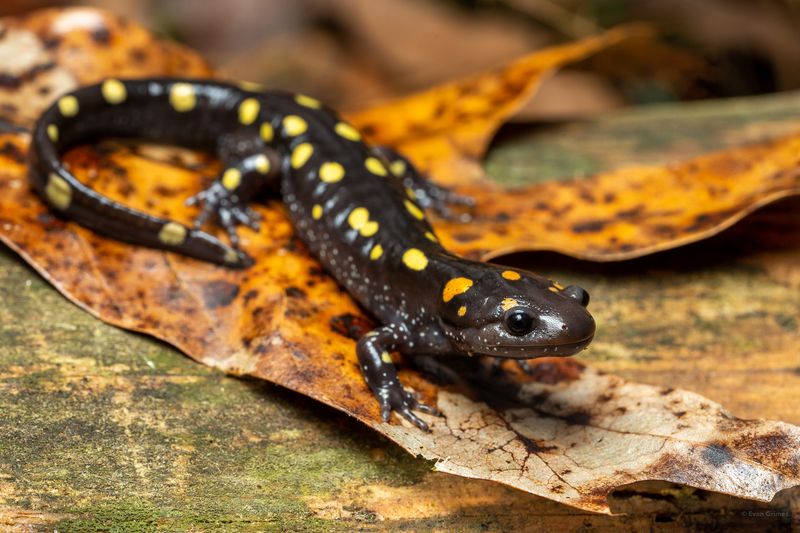
Spotted Salamanders are fascinating amphibians, easily recognized by their black bodies adorned with bright yellow spots. Found in North American forests, these salamanders lead secretive lives.
Their spots serve as a warning to predators of their toxic skin secretions, a natural defense mechanism. During breeding season, they migrate en masse to breeding ponds, an incredible natural phenomenon.
Fun fact: Spotted Salamanders spend most of their lives underground, emerging only for breeding, making their spotted appearances both rare and special.
Whale Shark

Despite being the largest fish in the sea, the Whale Shark is known for its gentle nature. Its massive body is covered with small, unique white spots, forming a constellation under the ocean.
These spots help scientists identify individual whale sharks, each pattern as unique as a fingerprint. Whale sharks feed primarily on plankton, cruising the oceans with grace.
Fun fact: Whale sharks are known to migrate long distances, traversing entire ocean basins, a testament to their endurance and the allure of their spotted beauty.
Spotted Owl
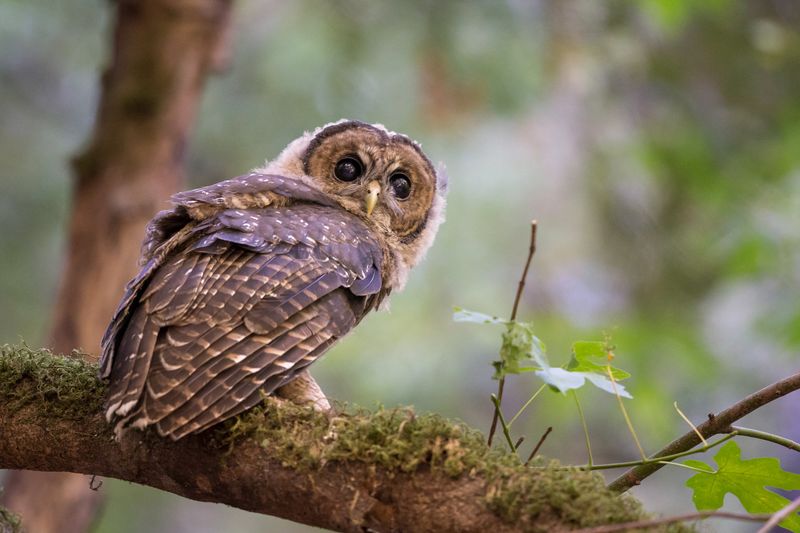
The Spotted Owl, found in old-growth forests, is known for its mottled brown and white plumage. These spots help it blend into its forest habitat, providing excellent camouflage.
Spotted Owls are nocturnal hunters, relying on their keen senses to catch prey. Their spotted feathers are not just for show; they are vital for survival in the dense woods.
Did you know? The presence of Spotted Owls is an indicator of forest health, making them critical to conservation efforts in their native habitats.
Spotted Python

True to its name, this python is adorned with a pattern of dark, rounded spots scattered across a lighter tan or cream-colored body—giving it a distinctive polka-dotted look.
Unlike many of its larger python cousins, the spotted python is relatively small, usually growing to about 3–4 feet in length. It’s a favorite among reptile enthusiasts for its manageable size, calm temperament, and unique appearance. In the wild, these spots help it blend into rocky habitats and leaf litter, making it a master of camouflage.
Proof that even snakes can be fashion-forward, the spotted python shows how nature uses patterns not just for beauty, but for survival.
Brook Trout

The Brook Trout is a freshwater fish admired for its vibrant coloring and distinctive spots. These spots, along with wavy patterns, decorate its body, making it a jewel of mountain streams.
Brook Trout prefer cold, clean water, often found in pristine environments. Their spots are not only beautiful but play a role in blending with the pebbly stream beds.
Interesting fact: The presence of Brook Trout is a sign of healthy water ecosystems, making them an important species for environmental monitoring.
Spotted Towhee

The Spotted Towhee is a vibrant bird found in North America’s brushy areas. Its striking black, white, and rust-colored plumage is accented by white spots on its wings and back.
These spots help it blend into the underbrush, while its melodic song adds charm to its presence. Spotted Towhees are ground foragers, often seen scratching at leaves.
Did you know? The Spotted Towhee’s song and presence are often used as indicators of biodiversity in their habitats, underscoring their ecological importance.

